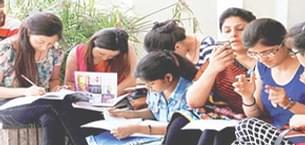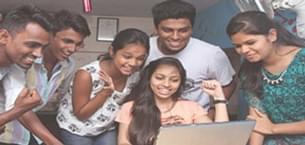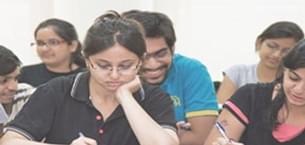.png?h=35&w=35&mode=stretch)
Yatin Kumar Study Abroad Content Specialist
Study Abroad Content Specialist
As an Indian student preparing to study in the USA, the process of moving abroad requires careful planning and organization. From packing essential documents to securing financial and medical preparations, there are several steps to ensure a smooth transition. With the right strategy, you can navigate this journey with confidence.
|
Key things to keep in mind before your departure:
|
Also Read: Cost of Living in USA
Before You Start Packing
Preparing for a move abroad involves much more than just throwing clothes in a suitcase. Here’s a quick checklist to get you started:
- Finalize Accommodation: Ensure your accommodation in USA is booked, whether on-campus or off-campus. Confirm all details with the landlord or university housing office.
- Open a U.S. Bank Account: Setting up a U.S. bank account will help you manage expenses once you arrive. Many universities assist with this process.
- Get Travel Insurance: Travel and medical insurance are essential to protect against unexpected emergencies. Some universities offer their own insurance plans.

Also Check:
Important Documents to Pack
Documents are the most critical items you’ll need when traveling to the U.S. Without them, your entry could be delayed or denied. Here’s a list of the essential documents:
| Document | Details |
|---|---|
| Passport | Valid for at least 6 months after your course end date. |
| F-1 Student Visa | Your approved visa to enter the U.S. |
| I-20 Form | Issued by your university for full-time enrollment. |
| SEVIS Fee Receipt | Paid proof of the SEVIS fee (₹29,200). |
| University Admission Letter | Confirmation of your acceptance to the university. |
| Immunization Report | Required by most universities to show vaccinations. |
| Standardized Test Scores | GRE, TOEFL, GMAT scores, if applicable. |
| Medical Records | Essential prescriptions and medical history. |
Tip: Keep both physical and digital copies of these documents. Using cloud storage (e.g., Google Drive, Dropbox) is a secure option.
Health and Medical Preparations
Healthcare in the U.S. can be expensive, so it's important to be prepared. Here’s what to pack:
| Item | Details |
|---|---|
| Health Insurance | Ensure you're covered by your university’s health insurance or a private provider. |
| Medical Check-up | Get a general health check-up before leaving. |
| Essential Medications | Carry your prescription medications, plus over-the-counter medications like paracetamol, ibuprofen, etc. |
| Eye Care | Carry extra lenses or glasses, along with your prescription. |
Tip: Verify your university's health insurance policies and local healthcare options before leaving.
Financial Preparations
Managing finances abroad is key to a smooth experience. Here’s what you need to take care of:
| Item | Details |
|---|---|
| Foreign Currency | Carry around $200–$300 (₹16,500–₹25,000) in cash, along with a forex card for larger amounts. |
| Credit/Debit Cards | Bring international cards (Visa, MasterCard) for daily expenses. |
| Bank Account Setup | Set up a U.S. bank account for easy transactions once you arrive. |
| Tuition Fees | Ensure you have paid the tuition fees and have a receipt as proof. |
| Emergency Fund | Keep an emergency fund for unexpected expenses. |
Tip: Use apps like PayPal or Google Pay to manage money transfers easily.
Also Check: Cheapest Universities in USA
Clothing and Accessories
The climate in the U.S. varies greatly, so it’s important to pack accordingly. Here’s a checklist of what to bring:
| Item | Details |
|---|---|
| Weather-Appropriate Clothing | Pack a mix of summer, winter, and fall/spring clothing depending on where you’re studying. |
| Formal Attire | You’ll need formal clothes for interviews, presentations, and professional events. |
| Shoes | Comfortable shoes for everyday use and formal shoes for events. |
| Accessories | Include scarves, gloves, and sunglasses (depending on the season). |
| Undergarments and Socks | Essential items you will need daily. |
Tip: Consider buying winter clothing in the U.S. if you're heading to a colder state, as it can be cheaper.
Electronic Devices
You’ll need several gadgets to stay connected and study efficiently:
| Item | Details |
|---|---|
| Laptop/Tablet | Essential for coursework and communication. Don’t forget chargers and extra batteries. |
| Mobile Phone | Either buy a U.S. SIM card or opt for an international plan. |
| Universal Adapter | The U.S. uses Type A/B plugs, so bring the correct adapter. |
| External Hard Drive/Flash Drive | For backing up important data. |
Tip: Ensure that your electronic devices are unlocked for international use.
Carry-On Essentials
Your carry-on bag should contain essential items for easy access during travel:
| Item | Details |
|---|---|
| Travel Documents | Passport, visa, I-20, and SEVIS fee receipt should be easily accessible. |
| Electronics | Headphones, mobile, laptop, and chargers. |
| Snacks | Light snacks for long flights or layovers. |
| Water Bottle | Stay hydrated, but keep it empty until after security. |
Tip: Check your airline’s baggage restrictions. Carry-on weight typically ranges from 7-10 kg.
Also Read: Documents Required to Study in USA
Checked-In Luggage Essentials
These are the items to pack in your checked luggage:
| Item | Details |
|---|---|
| Clothing | A mix of clothing suitable for different seasons. |
| Food Items | Ready-to-cook foods like instant noodles, masalas, and pickles. |
| Toiletries | Shampoo, toothpaste, face wash, etc. |
| Laundry Essentials | Detergent, fabric softener sheets, etc. |
| Medicines | Non-prescription items like pain relievers. |
Tip: Double-check baggage guidelines. Usually, the weight limit is 23 kg per bag, with a maximum of 2 bags.
What Not to Pack for the USA
There are a few items you should avoid bringing into the U.S. due to customs regulations:
- Fresh Fruits/Vegetables: These are usually not allowed due to quarantine rules.
- Raw Spices/Herbs: Some are allowed, but check U.S. Customs guidelines before packing.
- Excessive Cash: Carry no more than $5,000 (₹4,15,000) in cash. Most transactions should be done via cards.
Tip: Pack smart and avoid items that could raise issues at customs.
Moving to the USA is a big step, but preparation is key. By following this checklist, you can ensure a smoother transition and start your academic journey with confidence. Remember to stay organized, check your documents multiple times, and most importantly, enjoy the experience!
FAQs
Ques. What are the necessary things as a girl to carry while traveling from India to the USA?
Ans. As a female traveler, it’s important to pack both essential and personal items. Here’s a quick list:
- Clothing: Weather-appropriate outfits based on your destination (winter jackets, sweaters, etc.). You may also want to carry a few formal outfits for interviews or presentations.
- Toiletries: Don't forget your essential toiletries like shampoo, toothpaste, menstrual products, makeup, and other daily necessities.
- Personal Safety Items: A portable phone charger, pepper spray (where allowed), a small first aid kit, and some over-the-counter medications (like pain relievers, cold medicines, etc.).
- Other Essentials: A good pair of comfortable shoes, a scarf or shawl, and a few pairs of socks/undergarments.
Pro Tip: You can always buy toiletries and clothing when you arrive in the U.S., but having some basics will help you settle in quickly!
Ques. What are the mandatory things that we need to carry while traveling from India to the USA?
Ans. These are the absolute must-haves when you’re flying to the U.S. for studies:
- Passport (valid for at least 6 months beyond your course end date)
- Student Visa (F-1): Your approved visa will allow you entry into the U.S.
- I-20 Form: Provided by your university as proof of your admission.
- SEVIS Fee Receipt: Paid proof for the SEVIS system.
- Flight Tickets & Boarding Pass: Don’t forget your travel documents!
- Health Insurance Documents: Essential to protect yourself in case of emergencies.
- Important Medications & Prescriptions: Always keep them in your carry-on.
- Credit/Debit Cards: For easy access to your funds.
Pro Tip: Keep both physical and digital copies of these important documents. Cloud storage (like Google Drive or Dropbox) is an excellent option for backup.
Ques. What is the difference between checked luggage and carry-on luggage for USA travelers?
Ans.
- Checked Luggage: This is the larger luggage you check in at the airport. It’s stored in the hold of the plane. You can pack clothing, toiletries, and other bulkier items. However, keep in mind the weight limit (typically 23 kg per bag for international flights).
- Carry-On Luggage: This is a smaller bag you take with you on the plane, usually stored in the overhead compartment or under your seat. It’s meant for essentials you might need during the flight, like a laptop, medications, travel documents, snacks, etc. The weight limit is usually around 7-10 kg.
Pro Tip: Pack valuables, electronics, medications, and travel documents in your carry-on for easy access.
Ques. What if I want to travel to the USA? What should I do?
Ans. If you want to travel to the U.S., follow these steps:
- Get Accepted by a University: You must first be admitted to a U.S. university or college.
- Apply for an F-1 Student Visa: Once you have your I-20 form from the university, apply for a U.S. student visa (F-1).
- Pay the SEVIS Fee: This is a mandatory fee for all international students.
- Schedule a Visa Interview: You’ll need to schedule and attend an interview at your local U.S. embassy.
- Get Your Documents Ready: Once your visa is approved, ensure all documents are in order—like your passport, I-20 form, SEVIS receipt, and any medical reports.
- Book Your Flight and Pack: Once everything is set, book your flight and start packing!
Pro Tip: Apply for your visa well in advance—at least 3-4 months before your course starts.
Ques. What are the essential things I have to carry on my first trip to the USA?
Ans. On your first trip to the USA, here’s what you should carry:
- Essentials: Passport, visa, I-20 form, travel documents, and health insurance details.
- Basic Medications: Common over-the-counter items like painkillers, cold medicines, and any personal prescriptions.
- Clothing: At least a few days’ worth of clothes based on the weather (you can buy more once you arrive).
- Electronics: Your laptop, phone, chargers, and a universal adapter for U.S. power outlets.
- Snacks: Light snacks like nuts, biscuits, and tea bags (if you’re into Indian tea) can make you feel at home.
Pro Tip: Carry an empty water bottle through security and fill it up after you pass through.
Ques. Can we carry wooden gift items in our checked luggage while traveling to the USA?
Ans. Wooden gift items can be tricky because the U.S. has strict regulations about bringing in items that could carry pests or diseases (such as untreated wood). Here’s what you should know:
- Imported Wooden Items: The U.S. Customs and Border Protection (CBP) generally allows wooden items, but they must be treated and certified free of pests. Ensure that any wooden gift items are properly sealed and treated according to U.S. regulations.
- Raw/Untreated Wood: It’s better to avoid carrying untreated wooden items. If you absolutely have to, check with the U.S. embassy or the airline beforehand.
Pro Tip: When in doubt, leave wooden items behind or opt for gifts made of other materials, such as fabric, metal, or paper.
















Comments